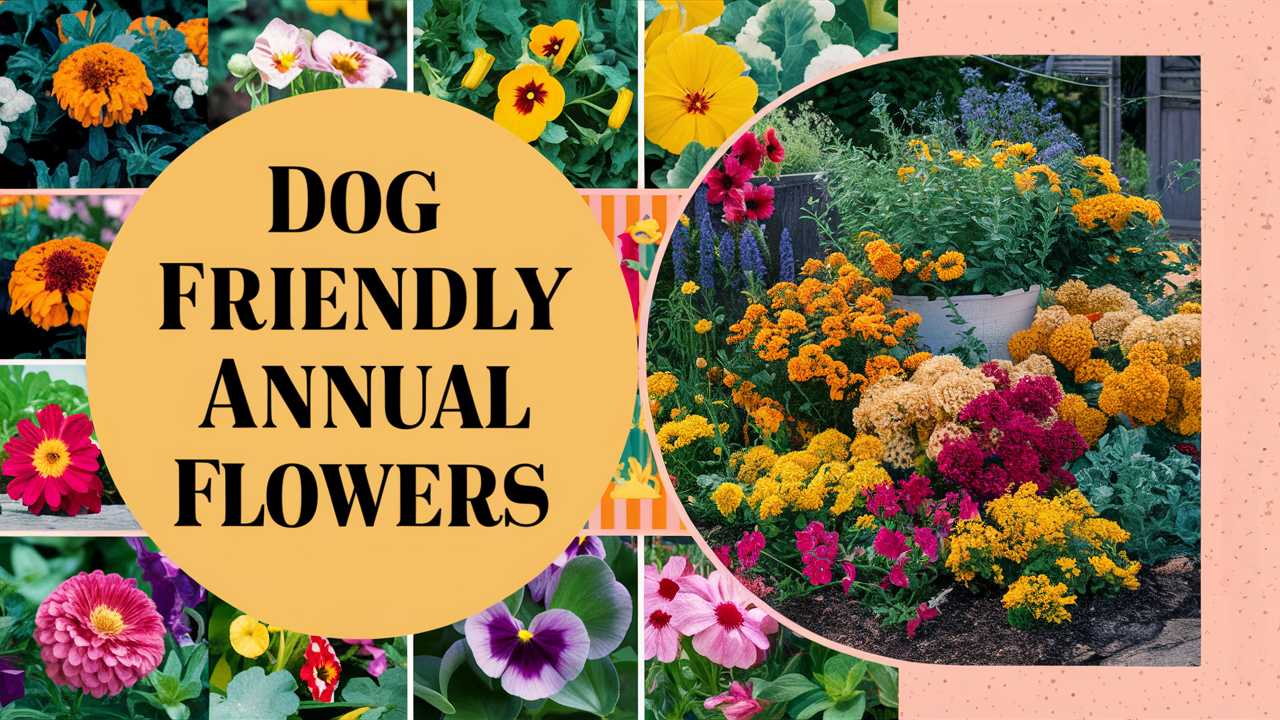In this guide, we’ll explore some popular dog-friendly annual flowers, exploring their characteristics, care tips, and how they can enhance your pet-friendly garden.
Snapdragons
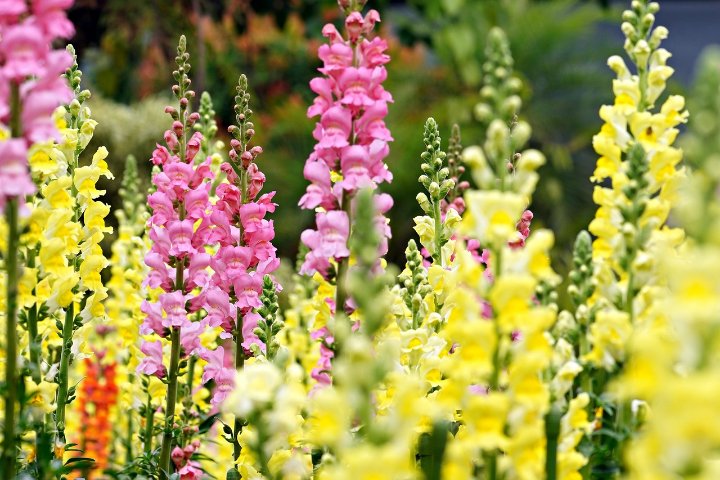
Snapdragons are charming, upright flowers that can bring texture and color to your garden. Growing in a variety of shades, from vibrant pinks to soft yellows, these blossoms are not only visually appealing but are also non-toxic to dogs. Snapdragons thrive in full sun to partial shade and may vary in height from 6 inches to 3 feet, making them versatile for different landscaping needs.
To plant snapdragons, consider starting seeds indoors about 8-10 weeks before the last frost or purchase young plants from a nursery. They prefer well-drained soil enriched with organic matter. Regular deadheading will encourage more blooms throughout the season. Beyond their aesthetic qualities, snapdragons also attract pollinators such as bees and butterflies, enhancing the biodiversity of your garden.
A fun fact about snapdragons is their unique flower shape. When squeezed from the sides, the blooms resemble a dragon’s mouth opening and closing—a delightful interactive experience for children and pets to enjoy alike. Just ensure that your pups don’t dig up the plants, as their roots can be slightly tender.
Marigolds
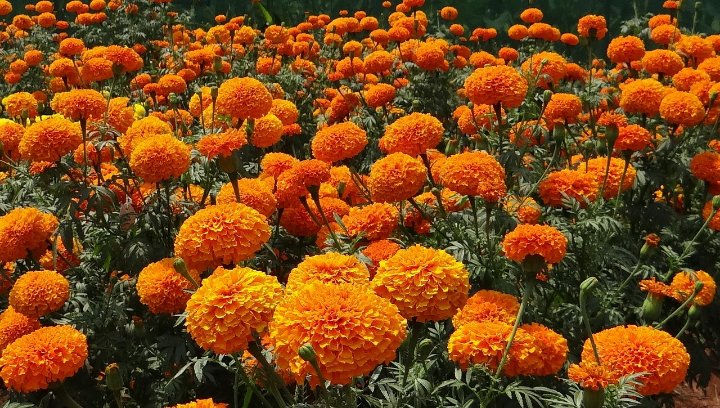
Garden marigolds are some of the hardest working flowers in the garden. Known for their rich, warm tones—often in shades of orange and yellow—marigolds are a favorite among pet owners due to their non-toxic nature. They are particularly great for deterring pests, making them a perfect companion plant in your garden.
Marigolds are easy to grow from seeds or small plants, thriving in well-drained, fertile soil with full sun exposure. Their blossoms bloom profusely from spring through early fall, providing cheerful color during the warm months. They grow best when regularly deadheaded, which encourages continued blooming and a bushy appearance, ideal for filling garden beds.
One incredible aspect of marigolds is their resilience. They are drought-tolerant once established, which means they flourish with minimal care, freeing you to spend more time enjoying outdoor adventures with your dog. Moreover, their vibrant hues can help brighten up a shaded corner of your garden, creating a beautiful spot for both you and your pup to relax in.
Pansies
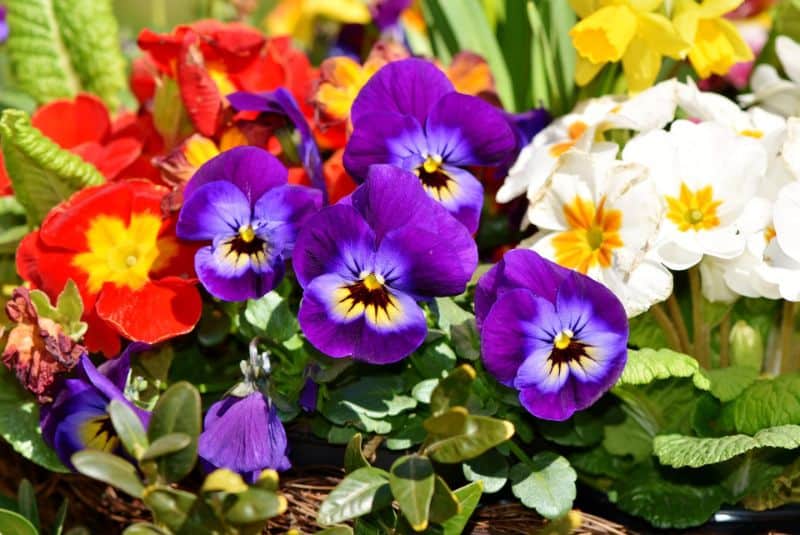
Pansies are known for their breathtaking, variegated flowers. With a broad spectrum of colors and a charming, smiling face, pansies can bring joy to any garden setting. Not only are they safe for dogs, but they also provide a delightful touch of whimsy with their unique coloration and patterning.
Pansies grow best in cooler temperatures and are often one of the first flowers to bloom in spring, making them a lively addition to your seasonal floral tapestry. Plant them in well-drained soil rich in nutrients, and they will thrive with adequate moisture. They flourish in full sun to partial shade, offering flexibility when planning your garden layout.
One of the best features of pansies is their long blooming period; you can enjoy their beauty from early spring until late fall. As an added bonus, pansies are edible! Their petals can be used to garnish salads or desserts, creating a stunning aesthetic that is entirely pup-friendly. Just make sure to leave enough for both you and your dog to admire!
Petunias
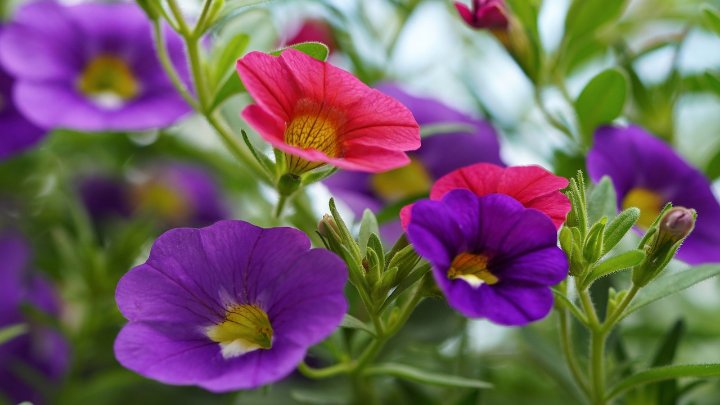
Petunias are another vibrant option in the realm of dog-friendly annuals. Their radiant colors and trailing varieties bring life to balconies, hanging baskets, and garden borders. Petunias are generally non-toxic to dogs, creating a beautiful yet safe environment for your beloved pet to roam.
These flowers thrive in full sun and well-draining soil, preferring a slightly acidic to neutral pH. They require consistent watering—especially in hot summer months—as they tend to dry out quickly. With a bit of deadheading, petunias will continue to bloom, providing you with a garden full of lively color.
An exciting aspect of petunias is their pleasant fragrance and the way they attract butterflies and hummingbirds, further enlivening your outdoor space. Additionally, petunias are often resistant to many pests due to their tough foliage, reducing the need for chemical interventions. This eco-friendly nature makes them not only safe for dogs but also safer for other wildlife, providing a harmonious garden environment.
Sunflowers

There’s something profoundly uplifting about sunflowers. Their sun-like appearance embodies warmth and cheer, making them a favorite among many garden enthusiasts. Even better, sunflowers are non-toxic to dogs, allowing you to fill your garden with their sunny disposition without concerns for your pet’s safety.
Sunflowers thrive in full sun and prefer rich, well-drained soil. They can grow tall, reaching heights of up to 12 feet or more, which can create a stunning backdrop for your outdoor oasis. You can sow seeds directly in the ground after the last frost or start them indoors to get a head start.
Their unique ability to track the sun as they grow is fascinating and a fun observation for pet owners and kids alike. Furthermore, sunflowers can provide seeds that are not only a treat for humans but also attract birds and other wildlife, turning your garden into a vibrant community hub. Sunflowers offer loads of joy and beauty while being a great option in gardens frequented by dogs.
Zinnias

Zinnias are another stellar option for a dog-friendly garden. With their wide variety of shapes and colors, these cheerful flowers can bring brightness to any corner of your yard. They are safe for dogs and have a reputation for being easy to care for, making them accessible for both novice and experienced gardeners.
Zinnias prefer full sun and well-drained soil, producing the best blooms when given adequate space to breathe. They come in a range of sizes, from smaller varieties to large bushy plants that heavily bloom from summer until the first frost. They require regular watering but are quite resilient, even in heat, requiring only occasional deadheading to promote continued blooms.
In addition to their attractiveness, zinnias can also attract beneficial insects, such as butterflies, which can bring added life to your garden. Their bright colors invite pollinators, creating a welcoming environment for birds, bees, and butterflies alike. This added aspect of biodiversity enriches your garden experience, allowing you to connect with nature while enjoying a safe space for your dog.
Nasturtiums
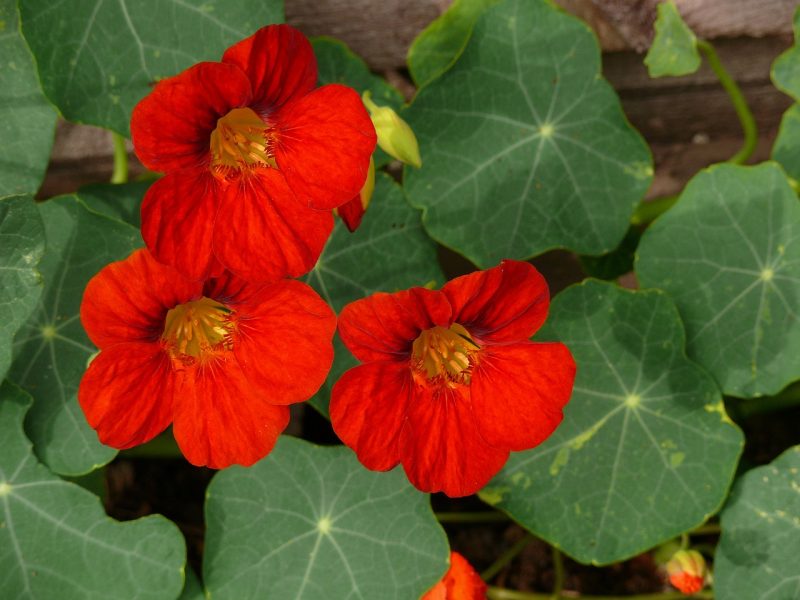
Nasturtiums are a delightfully versatile flower that will make any dog-friendly garden more dynamic. Known for their vibrant shades of orange, yellow, and red, these flowers are not only safe for dogs but also edible for humans. Both the blossoms and leaves of nasturtiums have a peppery flavor, making them a fun addition to salads or as a garnish for dishes.
These flowers prefer poor, well-drained soils and full sun, thriving best with little additional fertilization. Nasturtiums can climb, spread, or trail, offering versatility in garden design. You can plant them in containers, hanging baskets, or as ground cover. They bloom beautifully in the summer, providing vibrant color and a unique option for vertical gardening or border areas.
Moreover, nasturtiums are known for attracting various beneficial insects, like ladybugs, which can help control pest populations. This not only enhances the health of your garden but makes it a thriving ecosystem where your dog can frolic safely. As a bonus, the ability to snip a few leaves or flowers to enhance your dining experience adds a unique edible aspect to your gardening endeavors.


